The subject of today’s review is the beautifully crafted Samsung LE40C580. It is a semi-low-end Samsung TV model catered for the casual user and gamer with performance in mind. So without further ado, let’s move on to the Samsung LE40C580 Freeview HD TV review.
<!-- google_ad_client = 'pub-2887677957235196'; google_ad_slot = '4990177225'; google_ad_width = 336; google_ad_height = 280; //-->
Note: The specific model we reviewed was the Samsung LE40C580J1KXXU, which may be marketed by retailers and e-tailers as either Samsung LE40C580 or Samsung LE40C580J1K. While we did not test the 32-inch Samsung LE32C580, there shouldn’t be any drastic difference in picture performance.
Samsung is no stranger to crafting beauty with substance. Over the years Samsung consistently produced iconic devices that we have all come to love and adore – the LE40C580 is no different. It features the illustrious piano black finish with red highlights and translucent border that will complement most interiors. The simple yet elegant glass stand once exclusive to the elite also features red highlights and transparent edges, giving the set an expensive look.
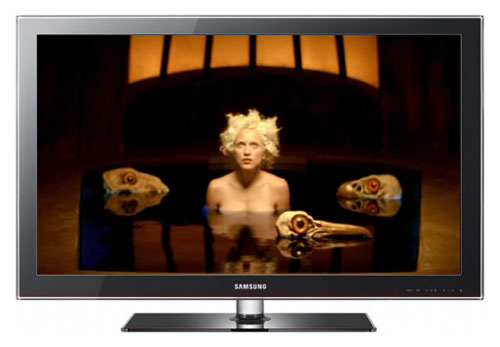
In terms of build quality, Samsung amended the cheap plastic feel by completely replacing the plastic enclosure with resilient metal frame, which also helps to reduce heat build-up. It is surprising to witness such attention to detail applied to a semi-low-end model like the Samsung LE40C580.
Fortunately, removing the LCD panel from the box and then assembling it onto the stand are quite easy and straightforward. It is better to have a partner but it can be assembled by one person alone providing the individual possesses both strength and balance.
For those who are green-minded, I am sorry to inform that the Samsung LE40C580 does not feature a hard switch, therefore during prolonged absence it is best to opt for the wall switch.
The location of the AV ports and the build quality are in keeping with today’s standards. The PSU is located on the left and the mainboard (which contains the processing elements) is located on the right. However, it is odd that Samsung still hasn’t shifted the 3.5mm Headphone Jack to the right or left side for ease of access.
The GUI on the Samsung LE40C580 is identical to the 2009 version found on the B750 series with negligible performance improvements, which is understandable considering the unit’s price point. Navigating through various layers of the user menu and the Freeview guide is effortless thanks to the effective layout. It is worth noting that the Main Menu did freeze twice and the unit automatically restarted once during the week-long review. However, it can hardly be considered as a problem and it is extremely rare for one to periodically access the menu beyond the initial set-up.
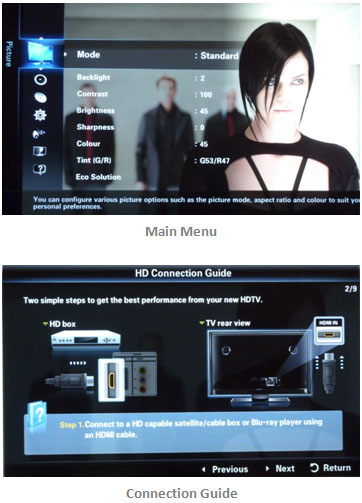
The sub-menu (dubbed as Tools) allows users to configure the picture and sound modes as well as connected devices via HDMI-CEC (Anynet+), but it is still missing a much desired shortcut to the Game Mode.
One of the chief selling points of the Samsung LE40C580 is the ability to tweak and control a number of configurations that governs the over-all image quality. Unlike higher-end models, the Samsung LE40C580 does not feature 3D Colour Management System (CMS) or test patterns designed to aid user calibration. However, its performance out of the box (post 24 hour break-in period) was quite amazing. There was no need to alter the Greyscale (While Balance) to obtain 6500K CCT.
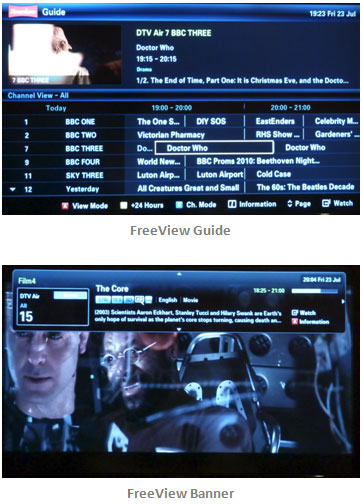
Like competing models, the Samsung LE40C580 features independent source customisation, which allows users to customise and maximise the potential of every source. The Samsung LE40C580 also features simple on-screen guide and simple connection guide (located under support menu).
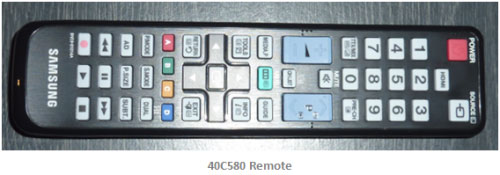
The supplied remote is exceedingly practical but lacking in aesthetics. In my opinion, it simply fails to complement the Samsung LE40C580’s lavish appearance. Then again, the topic of aesthetics is highly subjective and cannot be quantified. So in terms of functionality, the buttons are extremely responsive and accurate. The layout is easy to get around, and the unit itself is lightweight, robust and comfortable to use. In addition, although the supplied remote does not feature a backlit option, it does feature a button that is far more practical (a dedicated HDMI input control), which enables users to cycle through the four HDMI ports effortlessly.
Greyscale and Gamma are vital for portraying a given image accurately. Therefore, the display must be calibrated to a set of standards used by the motion video industry. In the case of HDTV, the set standard for colour space is Rec. 709 which is similar to sRGB, and both standards share identical white point (D65) and we chose the gamma value of 2.2.
Greyscale calibration ensures all greys between black and white are free from colour dominance, which is achieved by assigning the RGB values to 6500K Correlated Colour Temperature (CCT). Regrettably, it is not possible for a display to yield 100% accuracy. So the goal is to maintain errors within acceptable levels, which are indicated by Delta E values.
It was quite amazing to witness a preset colour temperature [WARM 2] yielding stable 6500K by default (following CCFL break-in period). But sadly, the Samsung LE40C580 does not feature 3D CMS due to cost, so the colours had to be balanced by altering the Tint (Red-Green) and Saturation levels. Rather oddly, Game Mode yielded slightly accurate colours than Movie Mode. Since Game Mode doesn’t degrade the image or disable any vital controls, I decided to continue evaluating the image quality in Game Mode.
Note: The results below were obtained by placing the colorimeter at the centre of the screen. It is done to ensure error values are kept to a minimum.
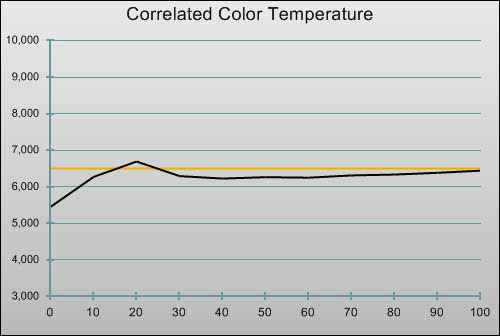 |
| Pre-calibration CCT in [Movie] mode |
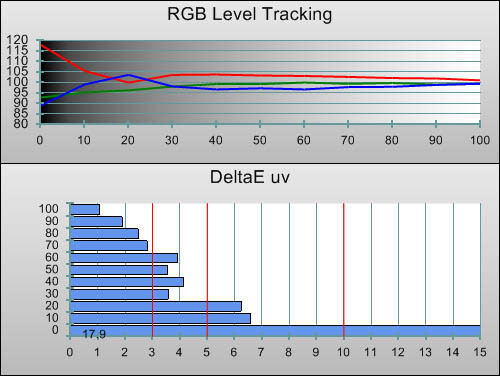 |
| Pre-calibration RGB tracking and delta errors (dEs) |
![Post-calibration CCT in [Movie] mode](https://www.hdtvtest.co.uk/news/wp-content/uploads/2018/04/hdtv_Samsung-LE40C580_post-cct.jpg) |
| Post-calibration CCT in [Game] mode |
![Post-calibration RGB Tracking in [Movie] mode](https://www.hdtvtest.co.uk/news/wp-content/uploads/2018/04/hdtv_Samsung-LE40C580_post-rgb.jpg) |
| Post-calibration RGB tracking and dEs in [Game] mode |
![Gamma curve in [Game] mode](http://www.hdtvtest.co.uk/image/hdtv/Samsung-LE40C580/post-gamma.jpg) | |
| Gamma curve in [Game] mode | Corresponding gamma tracking |
![Post-calibration CIE chart in [Game] mode](https://www.hdtvtest.co.uk/news/wp-content/uploads/2018/04/hdtv_Samsung-LE40C580_post-cie.jpg) |
| Post-calibration CIE chart with reference to HD Rec.709 |
![Post-calibration Luminance levels in [Game] mode](https://www.hdtvtest.co.uk/news/wp-content/uploads/2018/04/hdtv_Samsung-LE40C580_post-colour-luminance.png) |
| Post-calibration colour luminance |
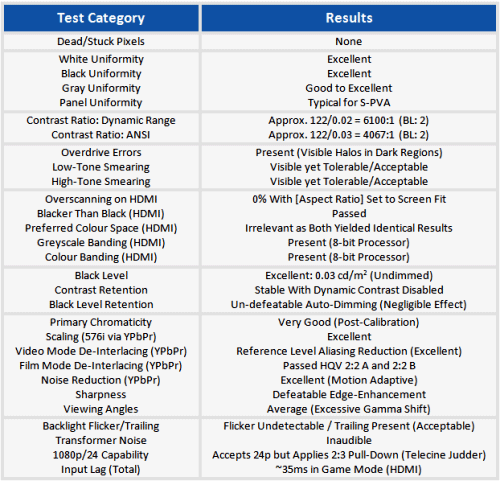

The Samsung LE40C580 produced excellent overall uniformity, which is quite remarkable for an SPVA panel. During the pure white test (100IRE), the classic red and green tinting commonly found on LCDs was absent. Backlight bleeding was well controlled (non-existent to the human eye) and the panel uniformity was typical for a consumer grade display. There were a few visible defects and imperfections across the panel, which slightly hindered calibration accuracy. However, such errors are common to most consumer-grade LCD TVs, and are extremely difficult to avoid.
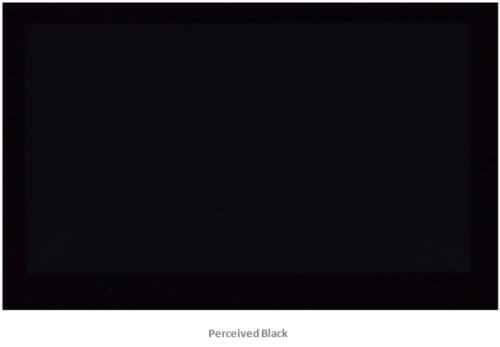
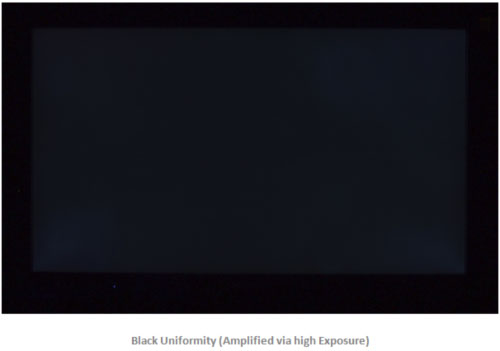
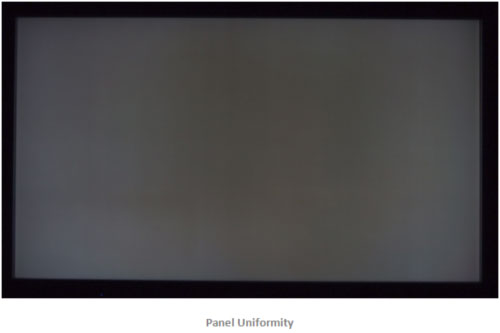
The Samsung LE40C580 in [Game Mode] with white level (contrast) set to 100 yielded excellent dynamic range of 6100:1 (Backlight 2) and ANSI of ~4067:1 (Backlight 2), which is a significant improvement over the 2009 models (also known as B Series). The Samsung LE40C580 continues to amaze us, and whatever auto-dimming there was did not produce any visible variation in Average Picture Level (APL).
Shadow detail benefited greatly from the improvement: subtle details that previously went unnoticed were highlighted, which of course improved the overall image depth. It would seem that Samsung has finally created an LCD panel that can match most of today’s plasmas in both dark and bright environments at a fraction of the cost. If the trend continues at the same pace, we may witness the first LCD TV that can natively render blacks comparable to high-end PDPs as early as next year.
![]()
PixPerAn is an excellent tool designed to evaluate motion artefacts, and it immediately highlighted the usual overdrive errors and a certain degree of pixel lag, which are still common to VA panels of late. Both Low and High-tone smearing were present, but did not cause notable quandaries with “real-world” contents. However, users with keen eyes may notice a slightly translucent negative-glow induced by the overdrive error (black ghosting), which manifests itself as grey outline (devoid of colour) around moving objects in dark reigns of the image. Such errors also amplify low-bandwidth compression artefacts, which is further exaggerated by the off-angle gamma shift (but this can be rectified by viewing the display dead-on from the recommended distance of two meters). Given the Samsung LE40C580’s other positive attributes, the imperfections stated above can be easily forgiven. After all, no LCD is perfect (especially not consumer-grade panels).
Please note the following images were carefully chosen and purposely captured to illustrate the terminologies used above and to provide visual evidence for our readers. They do not represent day-to-day viewing experience.
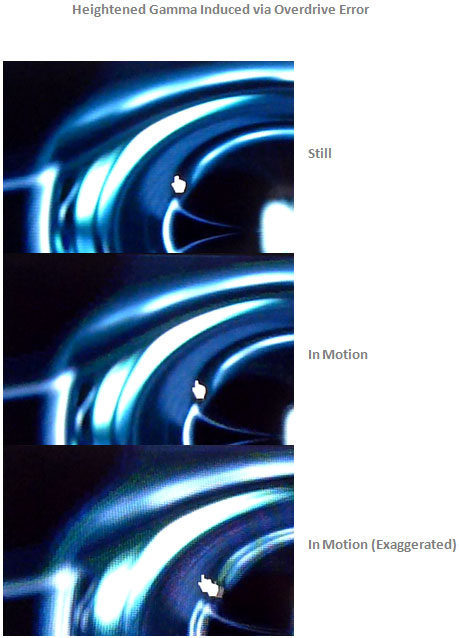
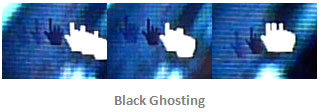
![]()
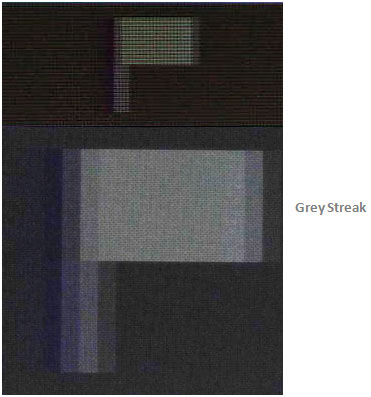
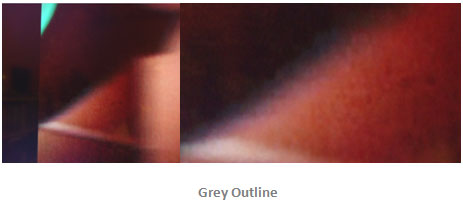
Motion blur inherent to LCD televisions is widely regarded as a negative attribute. In truth, the detrimental effect is exclusive to High-Motion Contents (48, 50 and 60i/p) as it obscures fine details during motion. Low-Motion contents (24, 25 and 30p) however benefit from the inherent blur as it helps to reduce frame-judder caused by prolonged latency between individual frames thus creating the illusion of continuous free-flowing motion, which appears easier on the eye. Some refer to it as soft motion as opposed to hard motion where continuous images appear as a series of stills due to the lack of blur. Since the majority of today’s contents are based on Low-Motion (including the majority of PS3 and Xbox 360 titles), a standard 60Hz LCD is more than sufficient. However, fans of fast-paced contents (e.g. sports) and 60p games probably should invest in a plasma TV instead.
Overscanning: The aspect ratio can be configured by pressing the [P.Size] button on the remote or via the Main Menu. Alas, the Samsung LE40C580 does not feature the option to zoom into contents mastered in Cinema Scope Aspect Ratio (2:39:1). But, doing so will degrade the perceived resolution due to crop and scale.
Blacker than Black (HDMI): The Samsung LE40C580 accepts both 0-255 and 16-235 formats via HDMI (RGB).
Viewing Angle: The viewing angle of the Samsung LTF400HM01 (1012-Slovakia) LCD module embedded within the LE40C580 is quite average, and suffers from excessive gamma shift. On bright contents, off-angle gamma and colour shifts were kept to a bare minimum. However, on dark contents, off-angle gamma shifts highlighted portions of the image that should remain invisible to the viewer. It also highlighted noise and dithering artefacts caused by heavy compression, which could pose a problem during off-axis viewing. Thankfully, viewing the unit dead-on from the recommended distance of two meters does cure the imperfections. If one requires a display with wide viewing angles, it is best to opt for a plasma television or an IPS LCD TV (preferable locally-dimmed for deeper blacks).
Sharpness: The Samsung LE40C580 fully supports 1:1 pixel mapping, as well as the option to configure edge-enhancement.
To evaluate the picture quality rendered by the Samsung LE40C580, a small number of carefully chosen images were used to detect visible artefacts/ errors. The image Aeon is used to detect errors in skin tones, luminance and depth. The image Acela Express is used to detect greyscale and gamma error in addition to black crush.
Note: The following tests were conducted under [Game Mode].
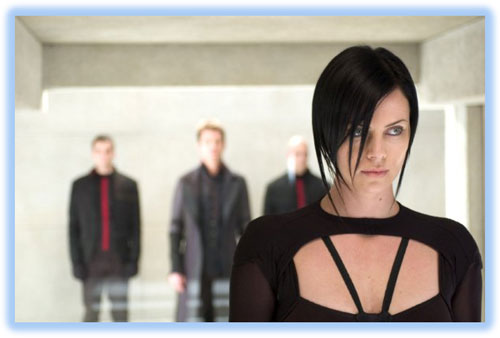
The Samsung LE40C580 yielded excellent results following basic calibration in Game Mode. The mass shades of warm colours that envelop Charlize Theron’s face, neck and chest were clearly visible and easily identifiable as very close to a calibrated display. A sense of depth was also present. However, in Movie Mode, the skin tone did appear rather off-coloured and over-saturated, which may not affect casual users.

As predicted, the performance of the Samsung LE40C580 was excellent and comparable to the calibrated Dell 2209WA. There was no evidence of any serious black crush, nor any form of gamma error.
HD contents on the Samsung LE40C580 were beautifully rendered as expected, thanks to the outstanding embedded processor and the new SPVA panel. I failed to spot any error that would normally destroy or severely impact the picture quality. The displayed images remained clean and faithful to the source with an ever-so-slight offset in colour that can only be detected by professionals in extreme cases. Material that rely on deep blacks to convey immersive and thrilling experience blossomed on the Samsung LE40C580, thanks to its ability to render blacks once exclusive to modern plasmas.
In terms of visible artefacts, grey ghosting was perceptible in certain scenarios (heavily compressed dark scenes in particular), but the effect was subtle at best. In addition, due to the LCD panel’s off-axis gamma shift and TV-grade anti-reflective coating, certain shadow detail appeared to have a lucid effect, which created a very prominent “LCD look” as illustrated below. It is by no means off-putting, but may deter those who have grown accustomed to phosphor-based displays (CRTs and PDPs). Such effect could be masked with the use of reflective coating, which the Samsung LE40C580 does not feature.
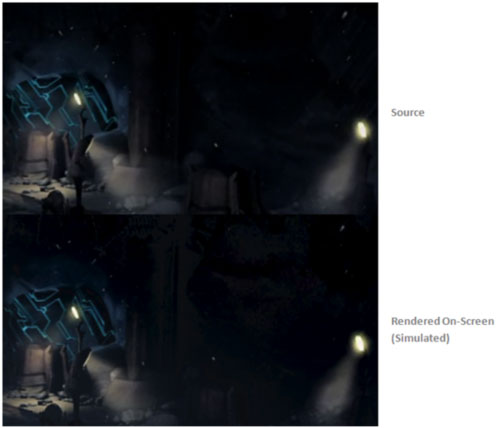
On the negative side, the Samsung LE40C580 lacks true 24p support, which is the only major flaw the Series 5 suffers from. During testing, the LE40C580 accepted 1080p/24 video signal but it was converted to 60p via 2:3 (Telecine Pull-Down). I cannot provide a reason why the Samsung LE40C580 failed to switch the LCD panel to 48/72Hz, but we will be passing our findings onto Samsung in hopes that they will release a firmware update to resolve this issue. After all, proper 24p handling is no longer limited to premium sets as it is now offered as standard by most manufacturers. In fact, the 2009 Samsung LE32B450 had such a feature.
The LE40C580 produced excellent results with negligible noise via YPbPr and RGB SCART as we’ve come to expect from Samsung. Freeview SD was equally excellent and the on-board noise reduction effectively suppressed micro-blocking and maintained maximum detail. Trident’s processor also triumphed in surpassing ATI’s UVD 2.2 in both jaggies pattern 1 and 2 found on the HQV DVD; and the overall picture quality dare I say (at times) was superior to SD CRT. As I watched “Taking Lives” on ITV via Panasonic Sky SD set-top box, I failed to notice the usual artefacts that often negatively impact viewing experience. The rendered image was clean and free from visible posterization, false colours and detectable colour bleed. Such excellence will no doubt benefit users with SD contents and legacy video game consoles.
Furthermore, as with HD, it would seem SD sources via external inputs also benefited from Game Mode as it produced more accurate colours. However, Game Mode does disable Motion Adaptive Noise Reduction, and does not permit users to configure the audio options.
Scaling: Upscaling 576i via YPbPr produced excellent results, but failed to beat the ATI UVD 2.2, which is understandable.
Film and Video Mode De-Interlacing: The Samsung LE40C580 did an excellent job of reducing aliasing to negligible levels during de-interlacing of high-motion contents, which can be easily mistaken for progressive source. The LE40C580 also passed pull-down detection found on the HQV disc with flying colours.
Digital Noise Reduction: The Adaptive Noise Reduction algorithm found in Samsung LE40C580 did not cause any form of adverse motion-related artifacts (e.g. smearing, loss of detail, etc.). Motion detail and saturation levels remained true to the content. In fact, the image of Sky SD via RGB SCART was completely clean and free from compression artifacts. The NR algorithm even managed to clean channels 146-149 and 319-328 effortlessly.
Gaming has become an integral part of our lives but in recent years, it has become difficult to find a HDTV that combines low input lag with good picture performance. Thankfully the Samsung LE40C580 excels in both regards. I was able to use the Samsung LE40C580 as a PC monitor and play FPS games without any detectable lag. I also failed to detect any lag between my Dell 2209WA monitor and the LE40C580 during side-by-side comparison. Hardcore gamers may want to stick to TN monitors or PDPs/ CRTs until the release of OLED TV, but for the majority of gamers, the Samsung LE40C580 should be an ideal gaming HDTV.
Apart from the low input lag, the Samsung LE40C580 also breathed new life into games thanks to its deep blacks and clean image. The LCD TV also disguised visible aliasing to an extent.
That said, gamers who play 60p games often may want to invest in a Panasonic NeoPDP for smear-free/ blur-free motion with ultra-low input lag, but it would be wise to factor in phosphor trailing which may annoy users who are sensitive to uneven phosphor decay.
Aside from notable improvements in build quality and black level, Samsung also managed to improve the sound quality on the LE40C580 to satisfactory levels. The two bottom-firing speakers provide fuller sound (with help of the built-in equalizer) as opposed to the cheap and metallic sound often common to previous Samsung models. However, it’s best to not to exceed volume level beyond 30 as it causes audible distortion.
In Game Mode, users cannot alter EQ or any vital options that is required to obtain full-body sound. Fortunately, users can purchase a pair of cheap active speakers and connect it via the 3.5mm Headphone Jack on the Samsung LE40C580.
Samsung unsurprisingly produced yet another winner that will appeal to consumers (including gamers) due its exceptional performance especially considering its price tag. In fact, I was so impressed with the Samsung LE40C580; I purchased one myself. To my surprise, the Samsung LE40C580 I received was embedded with an older SPVA panel (1009), which was made in China (our review unit sported the new 1012 panel manufactured in Slovakia).
Upon testing, the 1009 version produced ANSI black level of 0.04 cd/m2. It also had the classic white tinting and certain degree of backlight bleed, which did vanish following break-in. The response time on the 1009 version was identical to the 1012 version but did lag in certain circumstances (dark tones), and the 1009 did require greyscale calibration as the default setting was too warm. Aside from the minor differences, both LCD panels are an improvement over the 2009 version, and both share the same pixel structure.
After reading the above, I’m sure many will try and hunt for the 1012 (or above) version of Samsung LE40C580 in hopes of obtaining slightly better blacks, but in my honest opinion it’s best not to unless the panel purchased suffers from poor blacks, dead pixels or poor uniformity. If an individual (outside the UK) already has an 1009 panel, it is better to retain it, since the replacement model may contain the MVA panel from CMO, which could be much worse. However, if an individual notices persistent “grey ghosting”, then it may be worth attempting to obtain an A-MVA panel by AUO as they are known have better pixel response (in comparison to the latest S-PVA panel).
Samsung is no stranger to panel lottery and such dealings are not exclusive to Samsung. It is in fact a common practice among manufacturers. As far as I’m aware, only Sharp and Panasonic embed in-house panels on the majority of their product line-up.
Please note that the main review is based on the Samsung LTF400HM01 (1012-Slovakia) panel, and apart from the white uniformity and black level, the 1009 (LTF400HM01 – China) version is essentially identical to the 1012. In the LE40C580, Samsung has produced an excellent HDTV that is extremely difficult beat in terms of cost vs. performance (regardless of the panel), and therefore has earned our Highly Recommended award.

<!-- google_ad_client = 'pub-2887677957235196'; google_ad_slot = '0693194791'; google_ad_width = 336; google_ad_height = 280; //-->
Update 1 [Thursday, 29th of July 2010]: After returning the 1009 panel, I placed another Samsung LE40C580 order in hopes of receiving an AUO panel to benchmark, but I received an SPVA one instead, which led me to believe the UK consumers have a greater chance of obtaining SPVA than A-MVA or P-MVA panels. Thankfully, the received version (1015 – China) did match the blacks rendered by the Slovakian panel, but retained all the characteristic of the previous Chinese panel (average white uniformity and pixel response).
In addition, the supplied remote is notably less responsive than the one bundled with our Samsung LE40C580 review sample. It would seem that Samsung has already set its cost-saving agenda in motion.
_[Correction]: The quality of the remote depends on the supplier. So the chances of getting a responsive remote is purely down to luck.
_
Update 2 [Saturday, 31st of July 2010]: It would seem the differences between the Samsung versions are minute at best. The Slovakian model does seem superior as our review sample had better over-all uniformity, which may have helped it to produce 0.03 blacks. However, there’s no guarantee that all panels produced in Slovakia are identical. So if you have a Samsung panel and and happy with its performance, please do retain it.
In addition, I will be uploading the setting I currently use on my 1015-Chinese SPVA panel and if you wish to minimize the black/gray ghosting, set backlight to 2 and enable noise reduction on SD contents.
Update 3 [Friday, 17th of September 2010]: I ‘ve returned the 40C530 due to severer horizontal banding and re-obtained the 40C580, which seem to feature higher grade panel. It also features superior video processor and its advantages are highly obvious (including internal Media Playback). So in that sense, C580 is greatly superior to the C530 in every regard. However, the panel I received (1017 Slovakia) did has the classic S-PVA banding, which is far more tolerable but did significantly improve after 24 burn-in.
I also have to state that the majority of Samsung models can indeed accept and display 4:4:4. But in order to do so, the user must connect the source to HDMI 1 (HDMI/DVI) and rename it to PC via the user menu. Since the PC Mode locks out color and hue, the display must be profiled, so it’s only suitable for PC use. However, the C650 should allow the user to customize color via 3D CMS. But the lag may pose a problem.